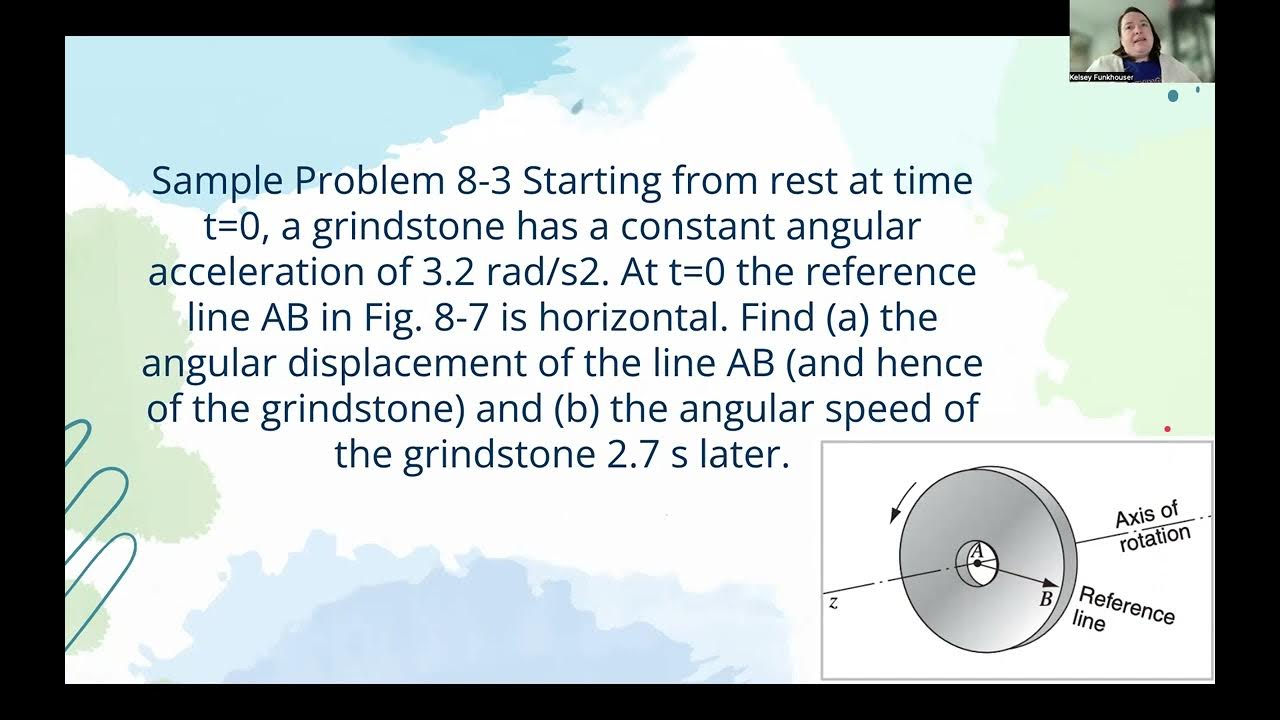Movimento Circular Uniforme - Aula 01
Summary
TLDRThis lesson on circular motion introduces the fundamental concepts of angular velocity and the relationship between linear and angular quantities. The professor explains the mathematical foundations, including the use of radians and the calculation of angular displacement. Key concepts such as angular velocity, both average and instantaneous, are discussed in relation to linear velocity. Practical examples involving a car moving on a circular track and a Ferris wheel are used to illustrate these ideas. The video aims to make circular motion more comprehensible by breaking down complex concepts into simpler explanations, helping students understand the subject better.
Takeaways
- 😀 Circular motion is a subject that often confuses students, involving new equations and angular quantities that were not present in linear motion.
- 😀 The goal of this lesson is to simplify the understanding of circular motion and make it more digestible for first-time learners.
- 😀 In circular motion, new concepts like angular quantities (e.g., angular velocity) appear, which differ from the linear motion we are familiar with.
- 😀 Angular displacement (φ) is related to the linear displacement (s) through the formula φ = s/r, where 'r' is the radius of the circle.
- 😀 Angular quantities like angular displacement (φ) are measured in radians, not degrees, which is a key distinction from earlier lessons in linear motion.
- 😀 The relationship between linear velocity (v) and angular velocity (ω) is given by v = ω * r, where 'r' is the radius of the circular path.
- 😀 Angular velocity (ω) is defined as the rate of change of angular displacement over time, and it can be calculated using the formula ω = Δφ/Δt.
- 😀 The unit of angular velocity is radians per second (rad/s), which may seem unfamiliar at first but is the standard for this type of motion.
- 😀 The lesson also includes practical examples to help apply the concepts, such as calculating the velocity of a car moving along a circular track.
- 😀 Conversions between units like meters per second and kilometers per hour are also important in solving problems related to circular motion.
Q & A
What is the main focus of the lesson in the provided transcript?
-The lesson focuses on circular motion in physics, specifically introducing angular quantities such as angular velocity and the relationship between linear and angular motion.
What is meant by angular velocity in the context of the lesson?
-Angular velocity refers to the rate at which an object moves along a circular path, measured in radians per second. It is related to the angular displacement over time.
How do angular displacement and linear displacement relate in circular motion?
-Angular displacement is the angle through which an object moves in a circular path, while linear displacement refers to the arc length. The relationship between them is given by the formula: angular displacement (θ) = linear displacement (s) / radius (r).
What units are used to measure angular velocity?
-Angular velocity is measured in radians per second (rad/s).
How do you convert between degrees and radians as mentioned in the transcript?
-To convert degrees to radians, multiply the degree measure by π/180. For example, 360 degrees is equal to 2π radians.
What does the formula 'v = ωr' represent in circular motion?
-The formula 'v = ωr' relates linear velocity (v) to angular velocity (ω) and the radius (r) of the circular path. It indicates that the linear velocity is proportional to both the angular velocity and the radius.
How is angular velocity used to calculate the time for one complete revolution?
-Angular velocity (ω) can be used to calculate the time for one complete revolution by rearranging the formula ω = Δθ / Δt, where Δθ for a full revolution is 2π radians. The time is then calculated as Δt = 2π / ω.
In the example with the ferris wheel, what is the relationship between the linear velocity and angular velocity?
-In the ferris wheel example, the linear velocity (7 m/s) and the angular velocity (ω) are related through the radius of the wheel (14 m). By using the formula v = ωr, we can solve for angular velocity, which in this case is 0.5 rad/s.
What is the unit of linear velocity, and how is it related to angular velocity?
-Linear velocity is typically measured in meters per second (m/s). It is related to angular velocity by the formula v = ωr, where r is the radius of the circular path.
What does the term 'space singular' refer to in the context of the lesson?
-In the lesson, 'space singular' refers to the arc length, which is the linear distance traveled along a circular path. This is used in conjunction with angular displacement to calculate the movement along the circle.
Outlines

このセクションは有料ユーザー限定です。 アクセスするには、アップグレードをお願いします。
今すぐアップグレードMindmap

このセクションは有料ユーザー限定です。 アクセスするには、アップグレードをお願いします。
今すぐアップグレードKeywords

このセクションは有料ユーザー限定です。 アクセスするには、アップグレードをお願いします。
今すぐアップグレードHighlights

このセクションは有料ユーザー限定です。 アクセスするには、アップグレードをお願いします。
今すぐアップグレードTranscripts

このセクションは有料ユーザー限定です。 アクセスするには、アップグレードをお願いします。
今すぐアップグレード関連動画をさらに表示

MATERI KINEMATIK kelas 11 bag 8 GERAK MELINGKAR BERATURAN GMB K Merdeka

Movimento Circular Uniforme (MCU) - Cinemática Escalar - Aula 16 - Prof. Marcelo Boaro

PHYS 121 - Week 6 Lecture 2 - Rotational Motion

Gerak Melingkar • Part 1: Sudut Radian & Gerak Melingkar Beraturan (GMB)

FISIKA KELAS X | GERAK MELINGKAR (PART 1) - Besaran-besaran dalam Gerak Melingkar

L18 - Dyanamics - Lesson 18 - Rigid Body Kinematics
5.0 / 5 (0 votes)
